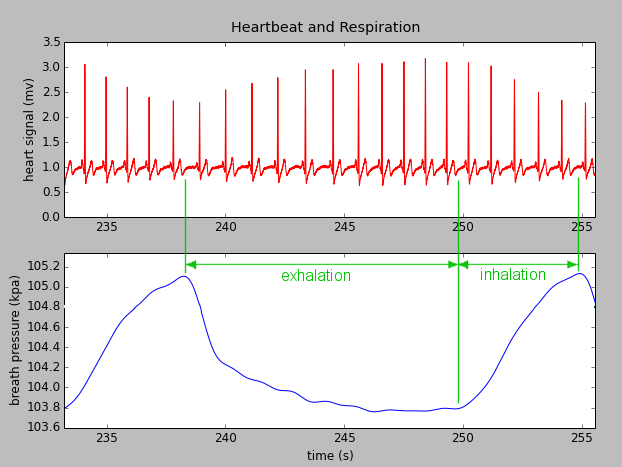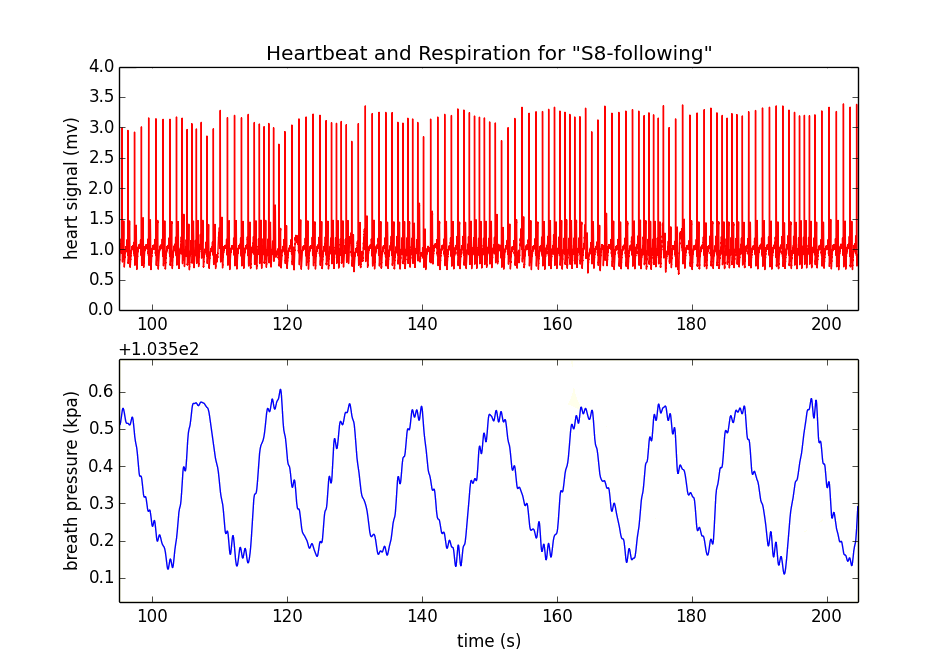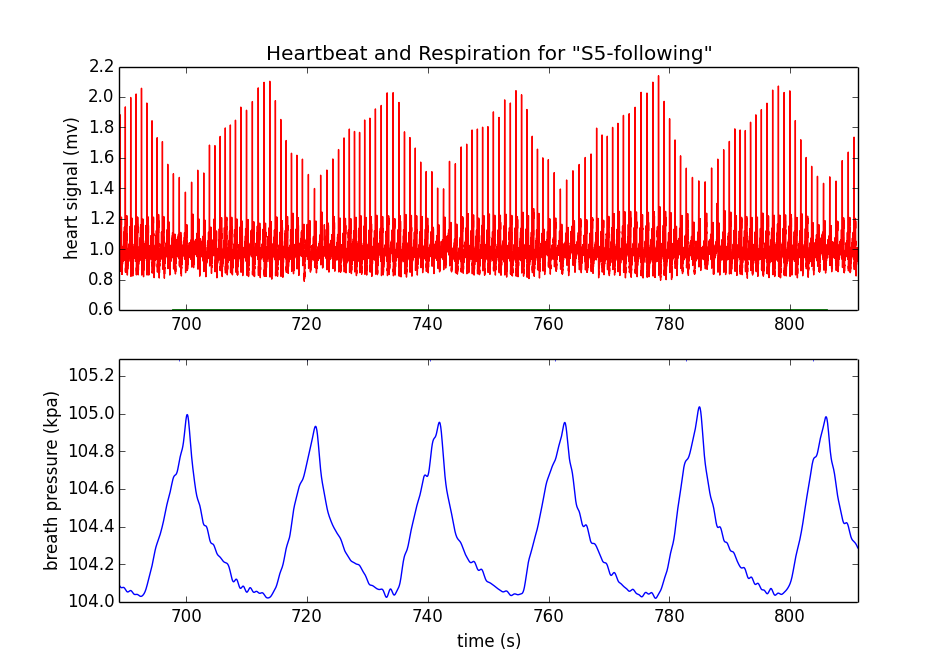The plots below show electrocardiogram and respiration signals for a 20-second segment of meditation.

Heartbeat and Respiration during meditation. Note the increase in amplitude of the ECG signal during exhalations.
During exhalations, the amplitude of the waves in the upper plot (the sharp spikes in the electrocardiogram, known as R-waves) increase while they decrease during inhalations.
A comparison of ECG signals for a novice and an experienced meditator are shown below.

Heartbeat and respiration for Subject 8, a relatively inexperienced meditator. Amplitude of R-wave increases by ~10% during exhalations.

Heartbeat and respiration for a highly trained meditator. Amplitude of R-wave increases by ~50% during exhalations.
For novice meditators, this effect was small (roughly 10% change in R-wave amplitude, as shown in the upper figure, above). For highly trained meditators the effect was quite pronounced (roughly 50% as shown in the lower figure, above).
The amplitude of the R-wave is an indicator of the strength of the signal from the heart when the left ventricle is forcing blood out to the rest of the body. The electrical resistance of the body between the heart and the ECG electrode on the surface of the skin changes as the lungs fill with air and then collapse. After consulting with a cardiorespiratory expert (an anesthesiologist), I have concluded that this dramatic change in R-wave magnitude reflects the deeper breathing of the trained meditator—as the intrathoracic cavity collapses during exhalation, the gap between the heart and the outer surface of the body (where the ECG signal is measured) shrinks, thereby reducing electrical resistance and resulting in an increased amplitude of the R-wave.